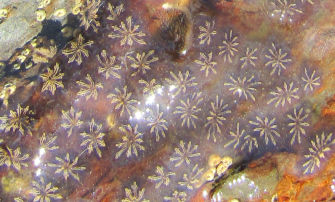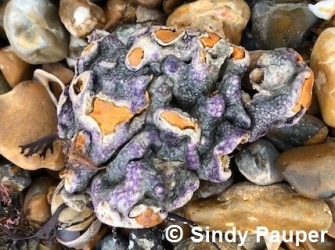Sea sponges and sea squirts
Sea squirts and sea sponges have a lot in common with each other. They are both animals, are primarily sessile (ie. they spend their adult lives stuck to something, such as a rock, and don't move) and they are both filter feeders ie. they take in water, and extract food from it.
What's the difference between sea squirts and sea sponges?
Sea Squirts
Sea squirts, also known as ascidian or tunicates, are animals which are typified by a protective skin (ortunic) covering their bodies.
They have two holes, or syphons, one of which takes in water and the second of which expels it after food has been filtered out.
The name 'squirt' comes from their ability to spurt when they are taken out of the water.
There are around 2,000 species of squirt.
Sea Sponges
Sea sponges are much more primitive animals (some of the most simple animals known in fact) and are, in fact, one of the earliest known animals. They have no digestive or nervous system. Their basic multicellular bodies have a network of pores and channels through which water is drawn in and then expelled. There are in excess of 5,000 species of sea sponge.
Lightbulb Sea Squirt
The individual zooids each have what resembles lightbulb filaments, hence the name. They are quite common although rarely seen by those unfamilar with them. They attach to rocks (as in those below) or seaweeds.

Orange Lights Sea Squirt
These are smaller and less common than the lightbulb sea squirts above.


Aplidium turbinatum

Morchellium argus

For star ascidian (below), please visit this page


Encrusting sea squirt


Soft Corals
These may look like sponges but are in fact corals which are a collection of individual animals which share a skeleton.
Dead Man's Fingers







